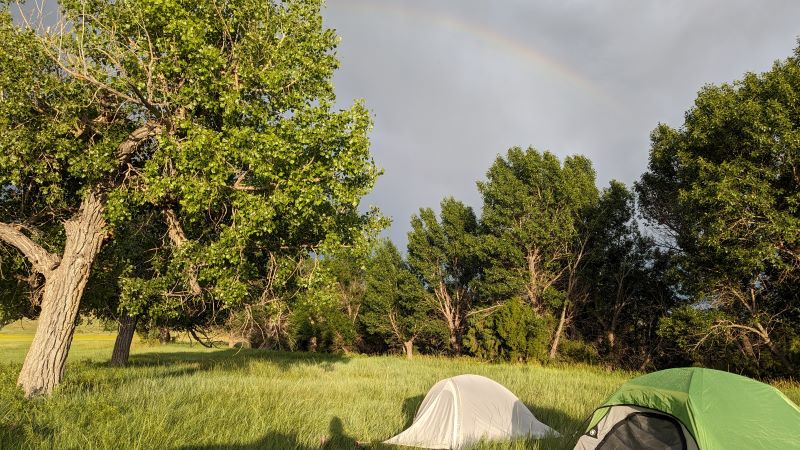Ever since I was a kid, I have been fasciated by the world around me. I’d spend hours digging in the dirt looking for worms, pulling apart cottonwood seed pods, hunching over the creek by my house trying to catch crawdads, and climbing trees to get closer to birds. As I grew up, I learned the science behind all those hours spent and found out that there are people who dig in the dirt professionally, who look at cottonwood seeds under a microscope, who wear waders and electrofish the crawdads, and of course, my personal dream job, looking at birds (without climbing trees to get closer to them usually).
Of course, I knew I would probably enjoy doing any of the above activities but when I discovered the Siegele Internship, I found out I had the opportunity to do all of the above in one summer.
As a 4th year wildlife biology major (and english minor!), I have a deep passion for conservation, learning, ecology, and helping others gain that same passion for the natural world around them. While thinking about how to structure this blog post, I looked back through my whole summer as an intern trying to find a through line that wasn’t as broad as “I had fun” or “I learned a lot”, which, to be fair, both of those are quite true. But as a fervent bird-nerd, I knew I had to show…
My Siegele Internship Through Birds
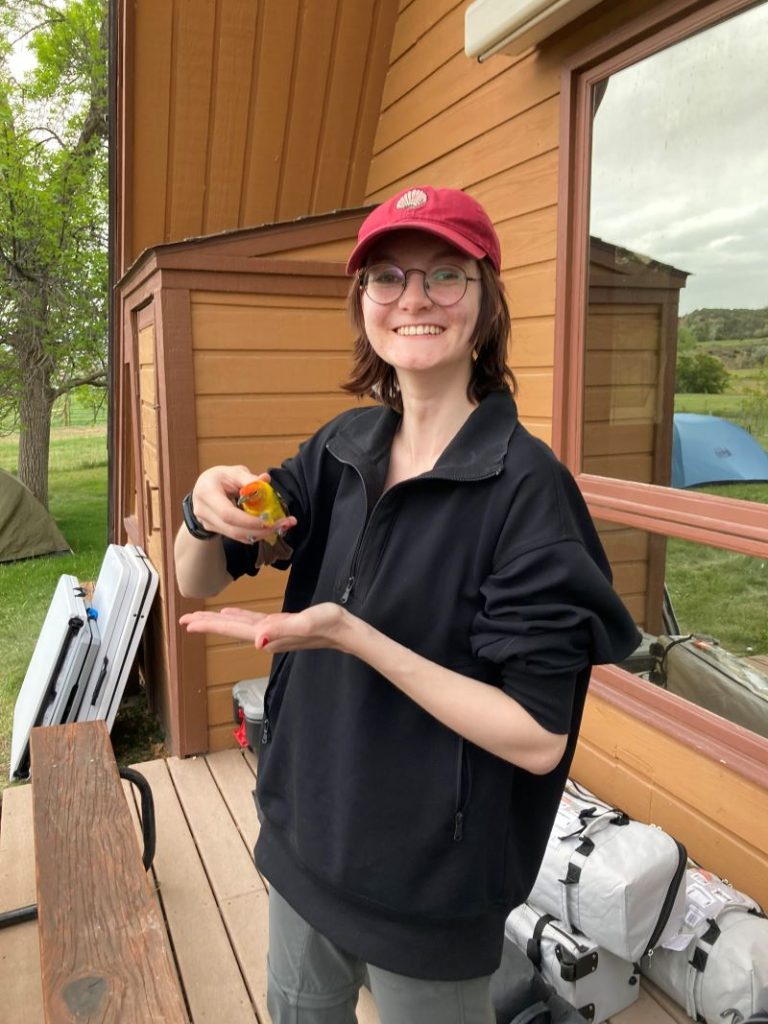
I woke up on my first day at Rifle Ranch to the chips of Pine Siskins and the much louder chorus of what would be a common bird during the internship, Red-winged Blackbirds. Nervous to really get to know my fellow interns, I left my tent and started the week. It turns out that my anxiety was unfounded as this year’s interns turned out to be such a fun, respectful, smart, and funny group of people brought together by a love of working outside, the ecosystems, and a shared craving to make the world a better place. And not only were my fellow interns amazing, but every mentor, teacher, researcher, scientist, crew lead, coordinator, and stakeholder I met this summer had that same enthusiasm for the world around them.
From learning practical skills such as plant and herp identification, hands-on fieldwork skills, and general wilderness skills to more professional and interpersonal skills such as how conservation easements work, working with people across interests and agencies, and making connections in the field, Rifle Ranch was whirlwind of new and exciting experiences and making wonderful friendships.
One bird moment that stands out to me is when Rob Monahan led a bird walk in the morning and I, with his permission, helped to lead the trip, sharing everything I knew about the species around us and getting to watch as interest grew in my fellow interns. It was incredibly exciting getting to answer people’s questions about my passion! We even saw a Lazuli Bunting, Bullock’s Orioles and their nests, and, later that day, I was able to help a Western Tanager that flew into a window.
My first placement after Rifle Ranch was working with the Wildlife Crew for the North Zone of the Arapaho-Roosevelt National Forest and Pawnee National Grassland. It was the first experience I would have in a prairie for the summer and suffice to say, I was a bit disappointed at first. Who would be interested in grass and flat ground when the mountains and forests were right there? But as it turns out, the prairie is a hidden world of fascinating biodiversity and passionate people. I got the opportunity to work alongside Forest Service employees Sam Scalice and Matthew Menard, who were wonderful mentors and teachers. The first day on the Pawnee was spent mapping active and inactive prairie dog towns using data from previous years. It was slow, hot work but seeing the large polygon mapped on the tablet at the end of the day felt quite rewarding. The next day was a bit more memorable and included drive-by mapping, off-roading to check a historic swainson’s hawk nest, calling out if we saw “p-dogs” (something my mother still doesn’t believe – “I refuse to believe federal employees are calling prairie dogs p-dogs!”), marking down Burrowing Owl activity, and even spotting the threatened Mountain Plover. I don’t think I’ve ever laughed more while working before in my life.
While I didn’t return back to the Pawnee after that first week, my time with the Forest Service was far from over. What followed was Northern Goshawk monitoring and experiences that would cement my interest in wildlife field work. The first day of Goshawk monitoring entailed driving to an area above Estes Park, CO, hiking up a constant incline for two miles, “hiking” (although it was closer to scrambling) down into a drainage while trying to avoid falling down the steep hill or getting an eye poked out by dead trees and branches, and finally getting to the first call point. By the time we reached the rock out cropping, I was sweaty, sore, and questioning taking the job. The first calling session went unanswered and I knew it was unlikely to get a response, much less find a goshawk. With spirits a bit dampened, we made our way to the next calling point.
Our caller rang out a few times and just as I was about to lose hope, there she was. A massive gray and white bird flew out of the trees below, screeching in response to the perceived bird in her territory. After the caller was frantically shut off, we watched in awe as she flew to a branch right across from the calling point. A spark of excitement grew into a flame of child-like wonder and ornithologist-like fascination. Physically shaking with excitement, I couldn’t seem to put down my binoculars or rip my eyes from the raptor that seemed to take up the moment.
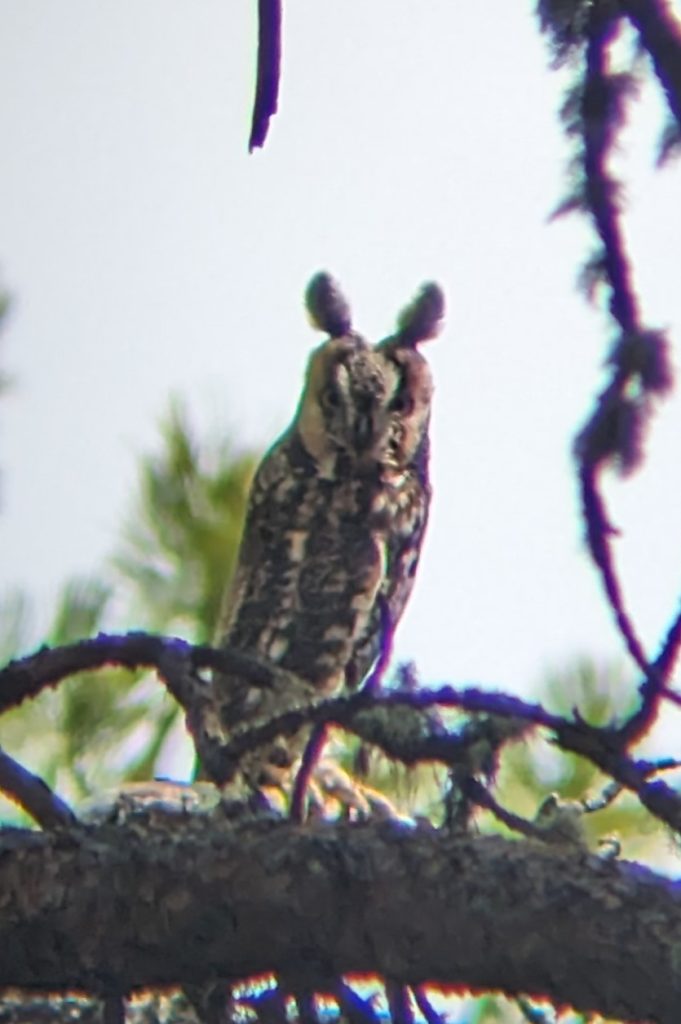
Eventually, we had to move on and actually find the nest of the amazing bird and after being swooped and screeched at, and a successful nest location, we left the drainage. Just like that, I had seen my first goshawk and from then on, I was hooked. Knowing that the forest around nests would be protected from logging made me feel like I was actually conserving the species I cared about. Working with the Forest Service provided invaluable experiences from in-the-field skills to an understanding of what working for a federal agency entails. Reading or being told what the Forest Service does is incomparable to actually working alongside the technicians and biologists who get the boots on the ground work done. It gave me a realistic look into fieldwork that is often constricted by deadlines and bureaucracy as much as it provided practical opportunities to interact with wildlife and the chance to work with brilliant and kind mentors.
I find it challenging to choose what to talk about regarding my time working with CNHP’s Native Plant Materials Program simply because there was such a variety of experiences, locations, and moments that happened over such a short period of time. But as it comes naturally to me, I’ll start with the birds.
It started with the killdeer, Eastern kingbirds, and yellow-headed blackbirds. Their cries followed me around the Oglala National Grassland as I learned how to identify grasses for the first time (or at least tried to). Fragments of scientific and common names floated around my head like leaves in a storm and I felt lost in the pages of the Flora. I hadn’t improved much by the end of the second day, still confused about just about every plant I had seen and how somebody could distinguish the fields of grasses with a glance. As I started wondering what I had gotten myself into, I took solace in the familiar bird calls of Lark Sparrows and Western Meadowlarks as the week continued. I struggled to remember Koeleria macrantha, Pascopirum smithii, and Liatris punctata and it seemed like my fellow intern had a much better grasp on the surrounding plants. But as time went on and I filled out the same forms, used the same maps, and repeated the same names over and over again (and with so much help from Allison Clark, the crew lead and pro botanist with the patience of a saint), I started to see the blades of grass through the fields.
I started to realize I was learning new things and gaining new life experience in a way I hadn’t ever before. On the last day of the hitch, I took the morning to do a bit of bird watching, reflecting on everything that had happened in the last 6 days.
We had moved from Nebraska into South Dakota at this point and I knew there were a few last birds I wanted to see. From the ticks to the 30 mph night wind to the heat to actually getting to collect seeds and see the detail of the prairie, the hitch had been the definition of a rollercoaster. I heard the familiar call of the birds that had been with me the entire trip as much as I had started to recognize the plants that had been with me from the start even if I hadn’t known it.
As I walked into a clearing between two creeks, a flash of black and white flew over my head. Whipping my binoculars to my face, I was met with the reward of a Yellow-Billed Cuckoo, a neotropical bird found largely in the Southern US. And here it was at the Northwestern extent of its range as if to give me one last new experience to remember.
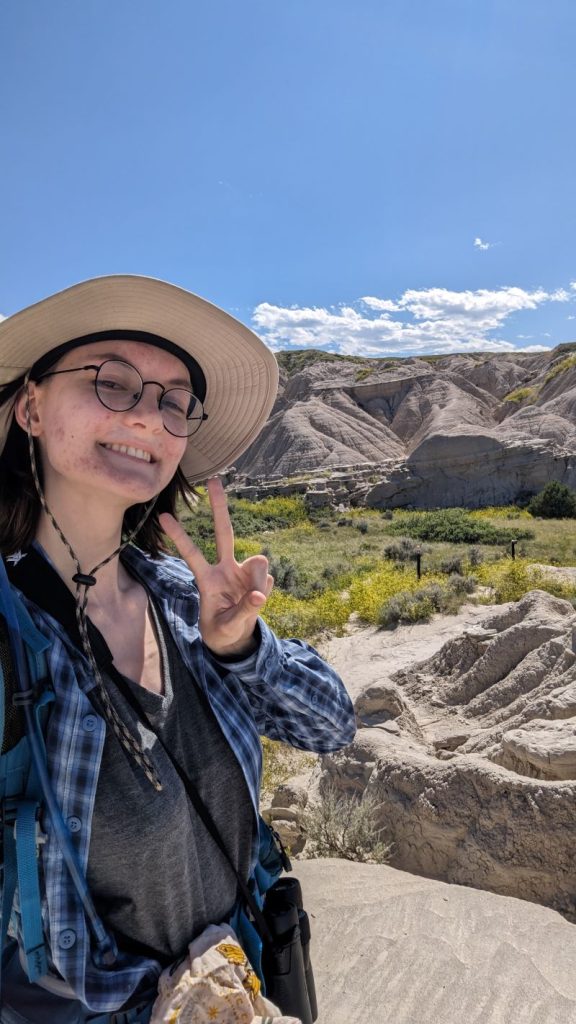
I find myself remembering that bird as I identify grasses and forbes on my walks around Fort Collins. A feathered representation of newness, learning, and overcoming self-doubt. While I still wouldn’t consider myself a “plant person,” the skills I developed and the connections I established make my time working with the Native Plant Materials Program more than worth it!
My second hitch included many of the same experiences: my anxiety at the thought of how many plants I didn’t know, the awe and wonderment I had at the new places that surrounded me in the Medicine Bow Mountains of Wyoming, the comforting calls of birds I knew well calming my nerves, and slowly understanding the flora that surrounded me. But this trip presented many new experiences such as getting lost driving (once Apple Map’s fault, once Google’s), needing to actually use 4×4 in a Jeep, getting bit by an assassin bug (ouch!), and hiding behind rain gear to escape hungry and incessant mosquitos. Of course, it wasn’t all bad by any means! I had the opportunity to meet and learn from our Forest Service contact Greg Pappas and work with some amazing and passionate volunteers to collect Thermopsis divaricarpa, a species of Fabaceae. Getting to work with such a big group in order to help the conservation of a species as well as better understanding the logistics behind those opportunities such as finding suitable locations and species to collect was a fascinating look into the person-facing side of conservation that I won’t soon forget. Falling asleep to the sound of Common Nighthawks and their wings whooshing through the wind, I knew that I made the right choice applying for the Siegele internship all those months ago.
